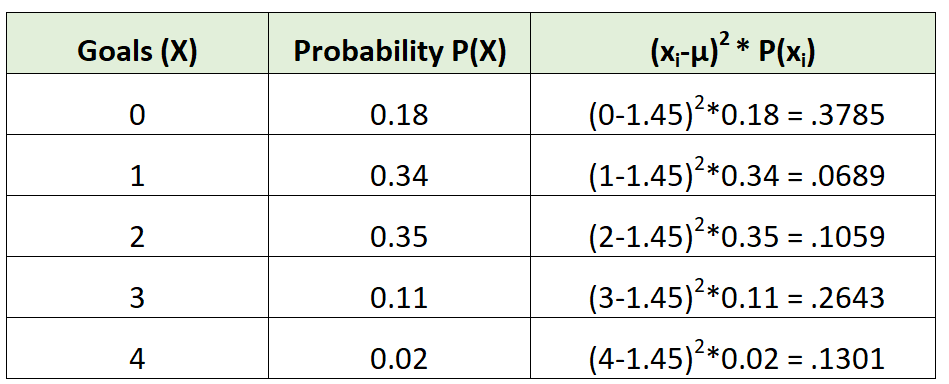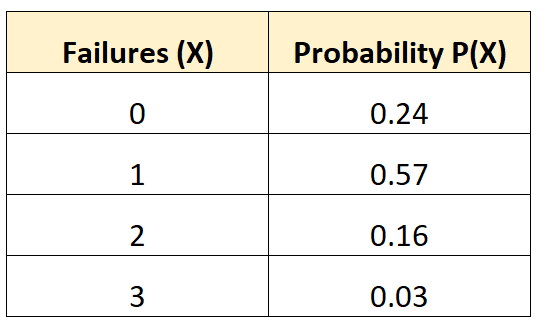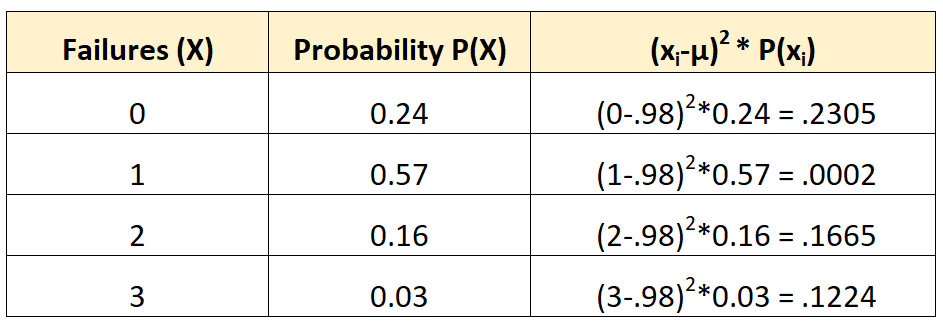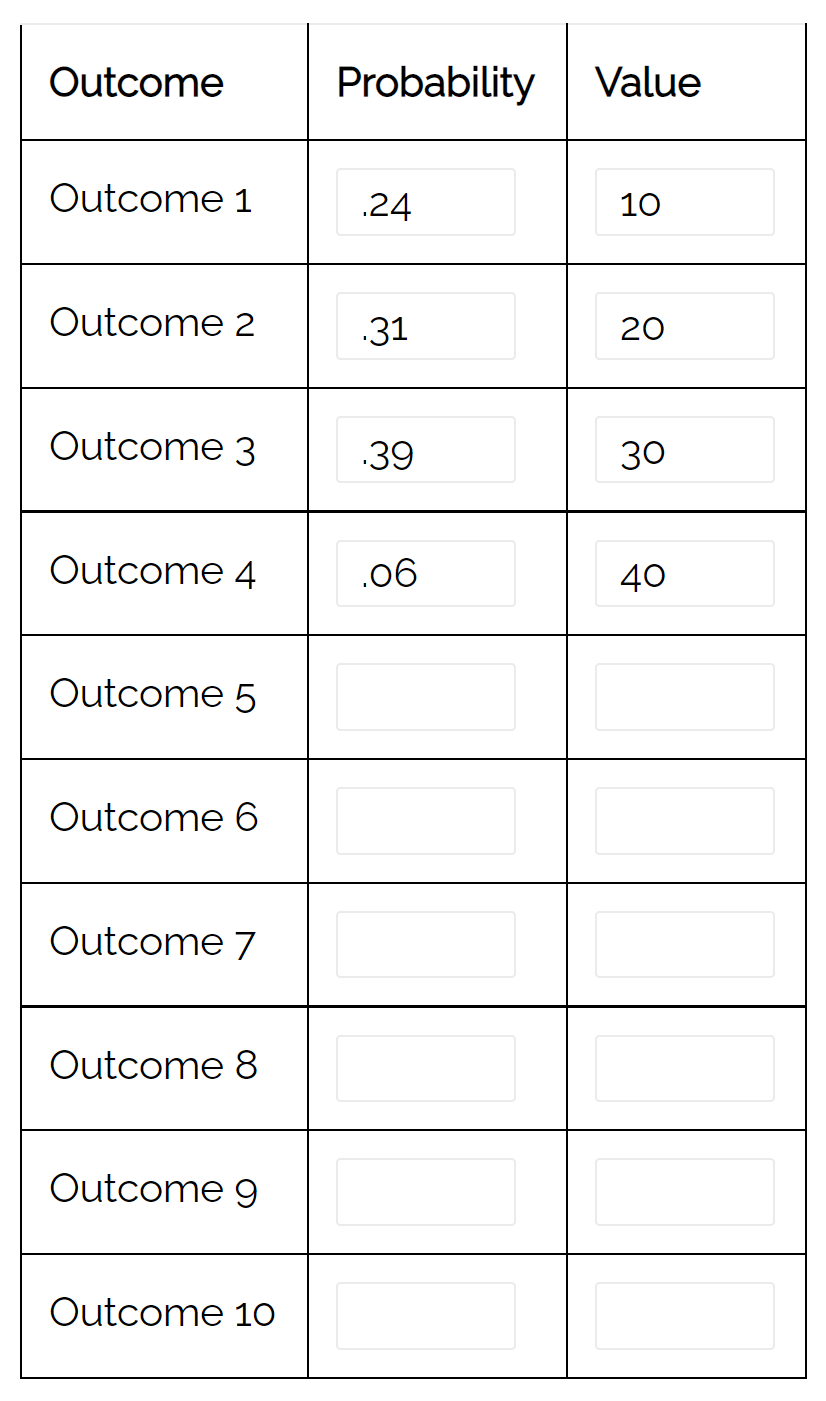A probability distribution tells us the probability that a random variable takes on certain values.
For example, the following probability distribution tells us the probability that a certain soccer team scores a certain number of goals in a given game:

To find the variance of a probability distribution, we can use the following formula:
σ2 = Σ(xi-μ)2 * P(xi)
where:
- xi: The ith value
- μ: The mean of the distribution
- P(xi): The probability of the ith value
For example, consider our probability distribution for the soccer team:

The mean number of goals for the soccer team would be calculated as:
μ = 0*0.18 + 1*0.34 + 2*0.35 + 3*0.11 + 4*0.02 = 1.45 goals.
We could then calculate the variance as:

The variance is simply the sum of the values in the third column. Thus, we would calculate it as:
σ2 = .3785 + .0689 + .1059 + .2643 + .1301 = 0.9475
The following examples show how to calculate the variance of a probability distribution in a few other scenarios.
Example 1: Variance of Vehicle Failures
The following probability distribution tells us the probability that a given vehicle experiences a certain number of battery failures during a 10-year span:

To find the variance of this probability distribution, we need to first calculate the mean number of expected failures:
μ = 0*0.24 + 1*0.57 + 2*0.16 + 3*0.03 = 0.98 failures.
We could then calculate the variance as:

The variance is the sum of the values in the third column. Thus, we would calculate it as:
σ2 = .2305 + .0002 + .1665 + .1224 = 0.5196
Example 2: Variance of Sales
The following probability distribution tells us the probability that a given salesman will make a certain number of sales in the upcoming month:

To find the variance of this probability distribution, we need to first calculate the mean number of expected sales:
μ = 10*.24 + 20*.31 + 30*0.39 + 40*0.06 = 22.7 sales.
We could then calculate the variance as:

The variance is the sum of the values in the third column. Thus, we would calculate it as:
σ2 = 38.7096 + 2.2599 + 20.7831 + 17.9574 = 79.71
Note that we could also use the Probability Distribution Calculator to automatically calculate the variance of this distribution:


The variance is 79.71. This matches the value that we calculated by hand.